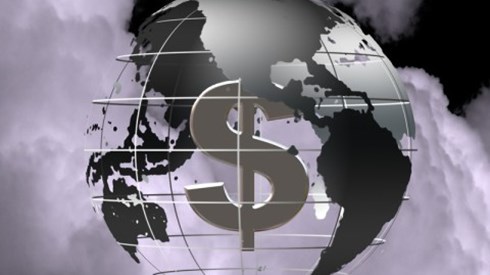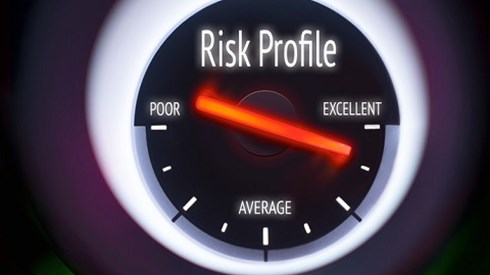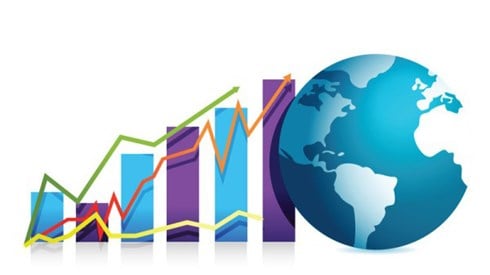Man-Made Risks Forecast To Cost World's Cities $320 Billion Annually

October 08, 2018

Man-made risks like cyber crime, interstate conflicts, or market crashes are a bigger threat to economic output than natural disasters such as hurricanes, floods, earthquakes, and volcanoes, putting an estimated $320.1 billion of global gross domestic product (GDP) at risk on average each year, according to Lloyd's.
The Lloyd's City Risk Index, built in collaboration with Cambridge University, measured the impact of 22 threats on 279 cities' projected economic output. The index revealed that 279 cities across the world—the key engines of global economic growth with a combined GDP of $35.4 trillion—risk losing on average $546.5 billion in economic output annually (GDP@Risk) from all 22 threats. This comprises $320.1 billion to man-made risks and $226.4 billion to natural catastrophes.
The key trends identified by the index are as follows.
- Man-made threats are on the rise. Man-made threats account for 59 percent of all global GDP@Risk. Financial market crash is identified as the biggest threat to the global economy, putting on average $103.3 billion in global economic output at risk per year. Reflecting the rising level of geopolitical instability around the world, the study indicates that interstate conflict is the second costliest peril—totaling $80.0 billion in GDP@Risk.
- Climate change is still a major risk driver. Climate-related risks together account for $123.0 billion of GDP@Risk, and this sum is expected to grow as extreme weather events become increasingly frequent and severe. The costliest climate events are windstorms, which account for $66.3 billion of GDP@Risk, and flood that puts a further $42.9 billion of economic output at risk.
- The majority of risk is concentrated in a few cities. The 10 cities with the highest GDP@Risk together face $126.8 billion in potential losses to economic output each year. This is almost a quarter of total GDP@Risk and more than the amount of GDP@Risk in Africa, the Middle East, and Latin America combined. This finding reflects the increasing concentration of wealth in certain geographic regions and, therefore, the vulnerability of the global economy to disruptive events.
- Building resilience is an urgent priority. The index scores each city's resilience based on criteria such as funding for emergency services and insurance levels. If every city in the index were to improve its resilience to the highest level, then global GDP@Risk would decrease by as much as $73.4 billion.
Extreme events are rare but costly when they do take place. To reflect this fact, the index averages out these large losses to produce an annual average loss estimate: GDP@Risk.
However, the actual losses from an extreme event in any given year could be much higher than this. An illustration is provided by Los Angeles where, according to the index, the average annual loss estimate for an earthquake is $2.7 billion GDP@Risk. However, according to the index, in an extreme scenario an earthquake in Los Angeles could cause the city to lose as much as $380.4 billion of GDP.
Lloyd's Chairman Bruce Carnegie-Brown commented as follows.
No city will ever be completely risk free. Disruptions will always occur, whether it is the result of a hurricane or a cyber attack. We have created this unique index to help cities around the world identify, understand, and quantify their exposure to risk, which will help them prioritize investments and build resilience.
The index shows that investing in resilience—from physical flood defenses to digital firewalls and enhanced cyber security, combined with insurance—will help significantly reduce the impact of extreme events on cities, improve economic stability, and enhance prosperity for all. I urge insurers, governments, and businesses to look at the index and work together to reduce these exposures by building more resilient infrastructure and institutions.
Professor Daniel Ralph, academic director of Cambridge Center for Risk Studies at the University of Cambridge Judge Business School, added the following.
One way of thinking about GDP@Risk is as the money a prudent city needs to put aside each year to cover the cost of risk events. Lloyd's City Risk Index helps governments, businesses, and the insurance sector understand the economic implications of a variety of man-made and natural risks and use the GDP@Risk metric to enhance their preparedness and resilience.
One of the most prominent features of the index is the worldwide rise in geopolitical risk, driven in large part by the threat of interstate conflict and civil unrest. We are likely to see this trend continue on a global level.
October 08, 2018







